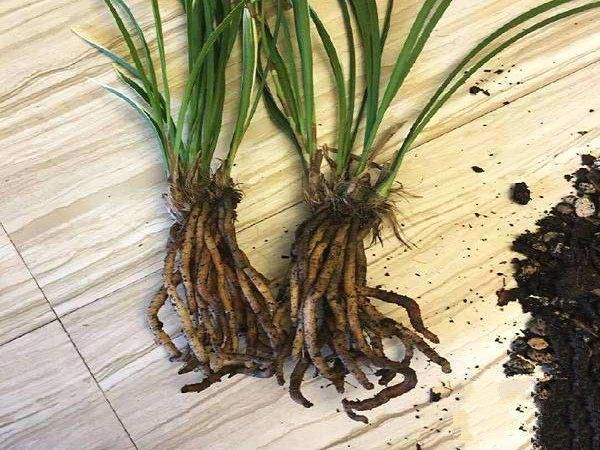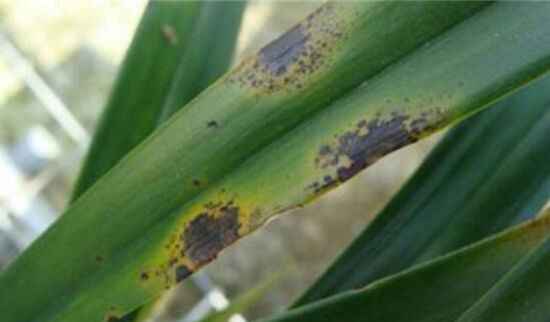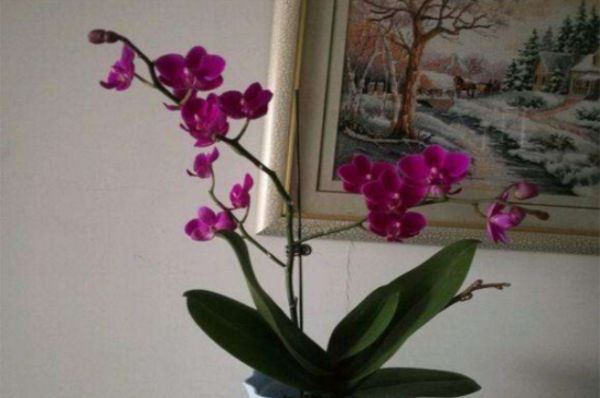Why do orchids have too much watering and rotten roots?

After the orchid is watered thoroughly for two days, the plant is still very wet, and whether it will cause rotten roots or not depends on the planting material and conservation environment. If the plant material planted has good water retention, but also has good water permeability and air permeability, and there is no problem with ventilation, you will not be afraid of rotting roots. If the planted plant material has good water retention, poor water permeability and poor ventilation, it is easy to rot roots and need to be paid attention to.
Orchids like to be moist and afraid of stagnant water. In general, as long as there is no problem with the plant material, there is no stagnant water and good ventilation, there will be no rotting roots due to too much watering. Because when there is a lot of water, it will be drained away quickly, there will be no stagnant water in the basin, the ventilation condition is good, the excess water in the plant material will be evaporated as soon as possible, and the oxygen supply of the root system is sufficient, which will not affect the normal activity of the root. Then why is it that there is always too much watering and rotten roots in the daily process of raising orchids? I think there are three main reasons:
1. Poor water permeability and air permeability of plant materials.
If the plant material for planting orchids is too soft, or if the stickiness is too large and water permeability is poor, and after watering, the plant material is wet and even there is stagnant water in the basin and the bottom of the basin, and the orchid root will begin to rot in this environment of excessive humidity for a long time. The leaf tip blackened on the leaves, and gradually spread downward. Langen will rot in a humid environment, on the one hand, the lack of oxygen supply in the wet roots leads to the death of cells due to hypoxia, and on the other hand, the electrolyte disorder in the roots leads to cell death and decay. Therefore, when planting orchids, we must choose good planting materials, and try to make more coarse plants and less fine plants, so that even if we are carelessly watered too much, the probability of rotting roots will be greatly reduced. If the choice of plant material is mainly fine plant material, with a small amount of coarse plant material, the difficulty of watering will be greatly improved, and the probability of rotting roots will be increased. When planting orchids with more coarse plant material, it is necessary to make the plant material a little wet, otherwise the root of the orchid may be empty because of insufficient water supply.
2. the ventilation condition is not good
Another reason why orchids rot easily is poor ventilation. Orchids like the environment with good air circulation, and orchids cultivated in open air are not easy to rot even if the planting material is not very good. Even if the indoor maintenance orchids are carefully selected, the probability of not paying attention to ventilation and rotting roots is still high. Especially in the hot summer, there is a big difference between frequent ventilation and non-ventilation. The reason is that frequent ventilation can take away the excess water from the plant as soon as possible, and the root cells are not easy to die if there is an adequate supply of oxygen in the roots. When the ventilation is not good, the plant material is too wet for a long time, and the oxygen content in the plant particles is insufficient, so the root system will rot rapidly in this humid and anoxic environment, resulting in poor growth of orchid plants. Therefore, in the process of maintaining orchids, ventilation is very important, especially every time after watering, it must be ventilated in time to let the water in the plant evaporate to ensure that the root system will not be stuffy.
3. High bacterial content in plant materials.
The plant materials for planting orchids are generally required to be sterilized to reduce the content and types of bacteria and ensure the safety of orchid roots. If the plant material contains a high amount of bacteria, the bacteria will multiply in large numbers and attack Langen in a long period of wet and warm conditions. If the resistance of Langen is poor at this time, or there is a wound surface, bacteria will take advantage of the opportunity to destroy the original ecosystem of Langen, resulting in root rot and poor growth. Especially in the hot summer, all kinds of bacteria are very active and have strong reproductive ability. it is dangerous for orchid plants to get too wet for a long time, keep a little dry, bacteria lose the conditions for reproduction, and their activity is reduced. the probability of Langen rot will also be reduced.
Treatment method of over-wetting of plant material
When it is found that the plant material for growing orchids is too wet for a long time, we have to do two things: one is ventilation, preferably 24 hours, so that the moisture in the plant material evaporates as soon as possible. It should be noted that the summer plant is too wet must not be exposed to the sun, will greatly increase the probability of rotting roots, but also sunburn leaves. You can bask in the sun when the light is weak in the morning and afternoon, which is helpful to drainage to a certain extent. Another thing is that if the orchid basin has something like moss, remove it and increase the rate of water evaporation. If the water and air permeability of orchid plant material is not good, it is recommended to change it in time when the temperature is right, do not delay. The longer the delay, the greater the risk factor. In addition, adjust the ways and methods of watering orchids to reduce the frequency of watering and reduce the risk of rotting roots.
Conclusion: the humidity of the plant material for planting orchids does not necessarily cause rotting roots, which is mainly related to the water permeability, ventilation conditions and bacterial content of the plants. When the orchid plant material is wet, it is necessary to ensure the time of effective ventilation, and at the same time remove the surface of the basin to increase evaporation. If the plant material is wet for a long time after the orchid is watered, it is recommended to change the plant material when the temperature is appropriate to reduce the risk of rotting roots.
Related
- Is the orchid suitable for indoor use? Is it good for the body?
- How to prevent the empty root of orchids?
- What to do after the crab claw orchid is withered?
- Why are the leaves of orchids always yellow? Fertilizing and watering.
- Can the root of the gentleman orchid be saved if it is rotten?
- Diagnosis and treatment of cotton-blowing beetle insects in Cymbidium
- There is a way for a gentleman's orchid to rot.
- What is the most suitable temperature and humidity for the orchid?
- How to raise a gentleman's orchid? Cultivation techniques of Cymbidium
- How to prepare the nutritive soil for the cultivation of Cymbidium



